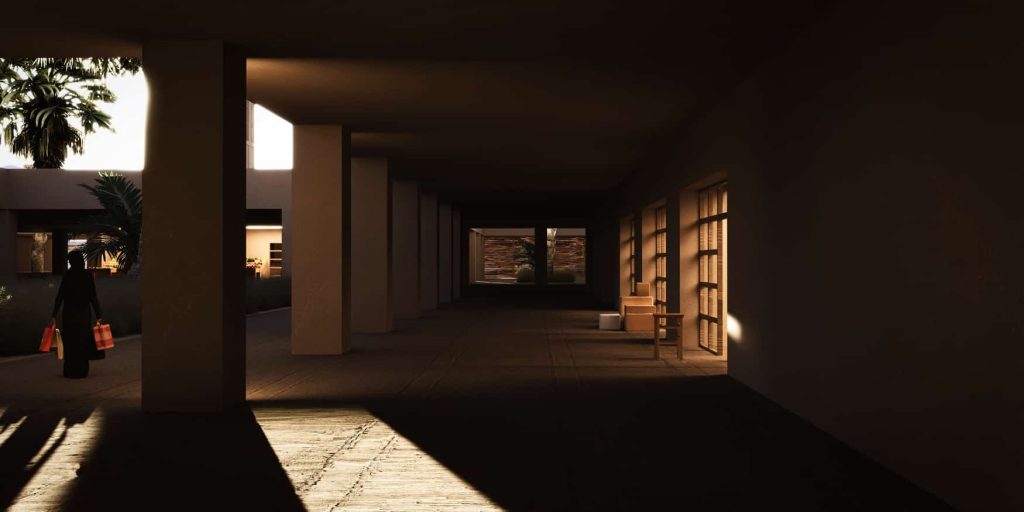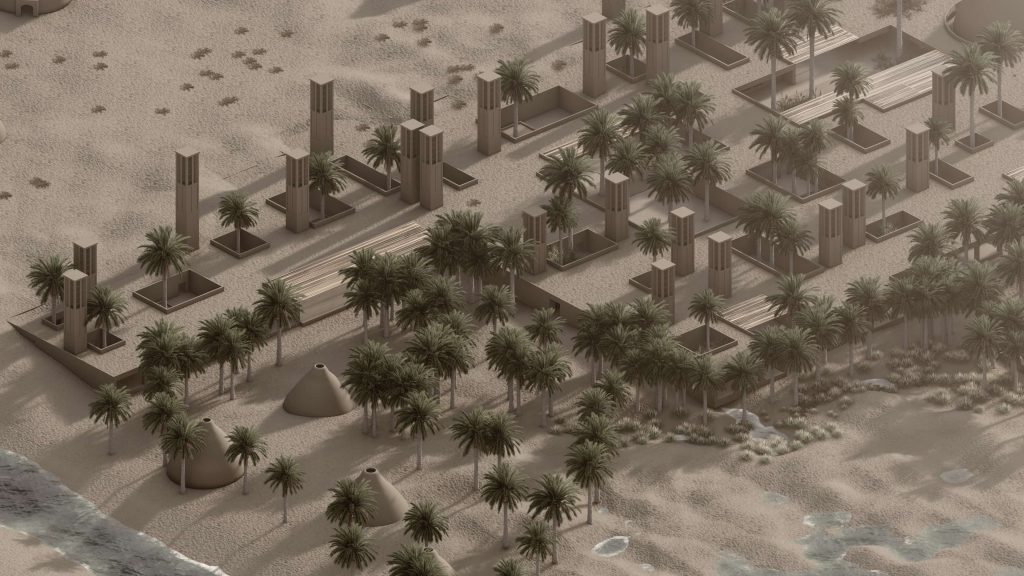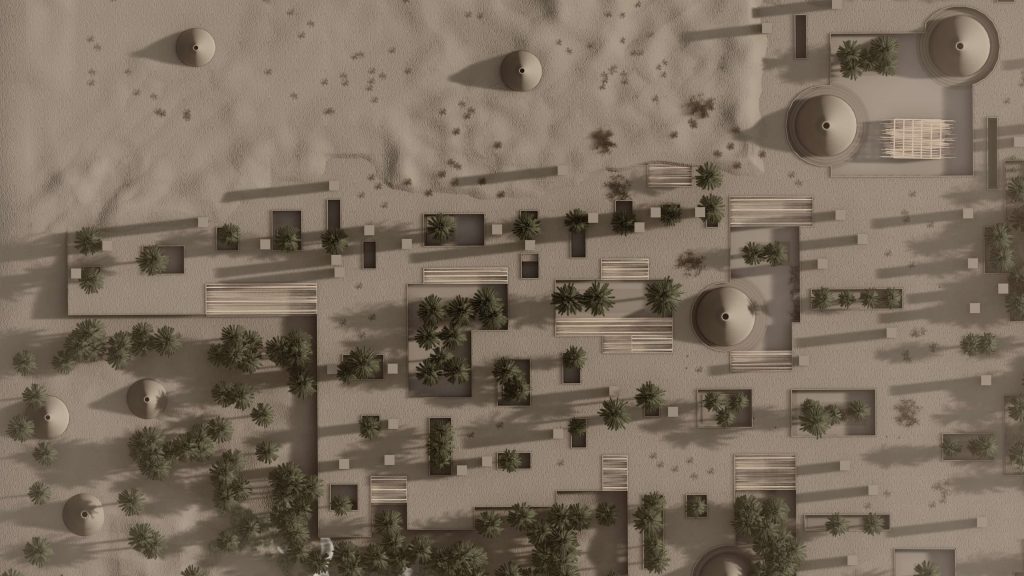"UNITY SPRINGS"
An effort towards peace and immersion in nature
Concept
Convergence only at a point where people, instead of being distant and turned away from each other, come together and work side by side for a common goal. Our aim is to use architecture to bring people together in one place so they can freely strive towards shared objectives. This initiative spans different ethnicities, and its realization can foster closeness among individuals with diverse beliefs, potentially contributing to the creation of peace in a region.
Project location
Although I believe that the project can be built in any area where there are maritime connections between the countries, but for this project there is a hypothetical plan site on the southern coast of Iran between the two historical ports of Kong and Lange.
These ports are about 3000 years old and according to the studies, deep connections between Iran, India, Arabs and Africa can be seen.
And with the study of a sea voyage called Gap (persian name), the available evidence is stated in a completely factual manner.
Overview
The unity springs project, as a replicable model in Asian coastal areas, aims to revive and create vitality in the historic ports of southern Iran that have lost their former prosperity. This initiative seeks to provide a new opportunity for people to gather, facilitating trade and cultural exchanges. Through these interactions, individuals can become familiar with each other’s tastes and cultures, fostering better understanding and ultimately leading to peace. Additionally, the unitysprings project, considering its natural location, strives to use sustainable methods for construction and living to ensure environmental conservation and optimal use of natural resources.
Free zone for cultural exchange
With the continuous advancement of technology and the existing ethnic differences, people are becoming more distanced from one another. This project presents itself as a free zone for cultural exchange, aimed at facilitating interaction between different ethnic groups. Strategies such as markets for trading traditional and agricultural products, as well as research spaces for studying various cultures, have been integrated into the project. Most of the existing functionalities strive to create a system that enables the project to develop and sustain itself.
These spaces include the following :
Bazaar
The market can be an important opportunity for bringing traders together. This opportunity can usually encompass many individuals, who will interact with each other directly and indirectly.
The market functions like a pathway. Historically, the market layout connected the port to the city, and it is designed in the same way now. Damage to this pattern led to the decline of the Kong market in the past.
Residential
This project includes temporary residential spaces aligned with the urban development area. These spaces are designed primarily for the daily interactions and rest of users from various ethnic backgrounds. This area can encompass the daily lives of individuals, although the city of Kong itself has a high capacity for residential living and development.
Workspace
Given the presence of skilled individuals in shipbuilding and carpentry, the project includes small ship repair docks and carpentry workshops. This allows people to increase production collaboratively and offer their products in the market, providing opportunities for working together.
Water strategies
Given the potential risk and existing evidence of water wars worldwide, this project aims to provide an effective solution for supplying a significant portion of the needed water. This solution is applicable in most arid regions that experience sudden rains and floods.
People in southern Iran, despite their proximity to the sea, had limited access to fresh water. To meet their needs, they used methods to collect rainwater. Additionally, to cope with harsh weather conditions, they employed sustainable techniques for air ventilation in their homes.
In this project, we aim to update and revive the traditional rainwater harvesting elements that have existed for generations, transforming an ancient method into an efficient modern solution.
Construction method
Moreover, accessible materials have been used in construction, along with traditional methods available around the project area that have been effective for thousands of years. This approach aims to lead us towards designing and constructing a sustainable and environmentally homogeneous project.
The idea of the project's atmosphere
The three regions of Kong, Lenge, and Laft, which form a dotted triangle surrounding the project, each contribute uniquely to the solidity of the structure, making it well-suited for its site. This influence radiates into the project's architectural mood.
The main aim
Currently, achieving peace is one of the most fundamental needs of the globe. A subject that can, for relatively little money, unite multiple worlds could serve as the project's foundational element.
Conclusion
It is hoped that by considering the needs of the users and being well-positioned within nature, and pursuing a human-friendly goal, the project can serve as a suitable model that can be replicated in usable points. This can contribute to expanding the circles of peace and friendship in the larger world.




























